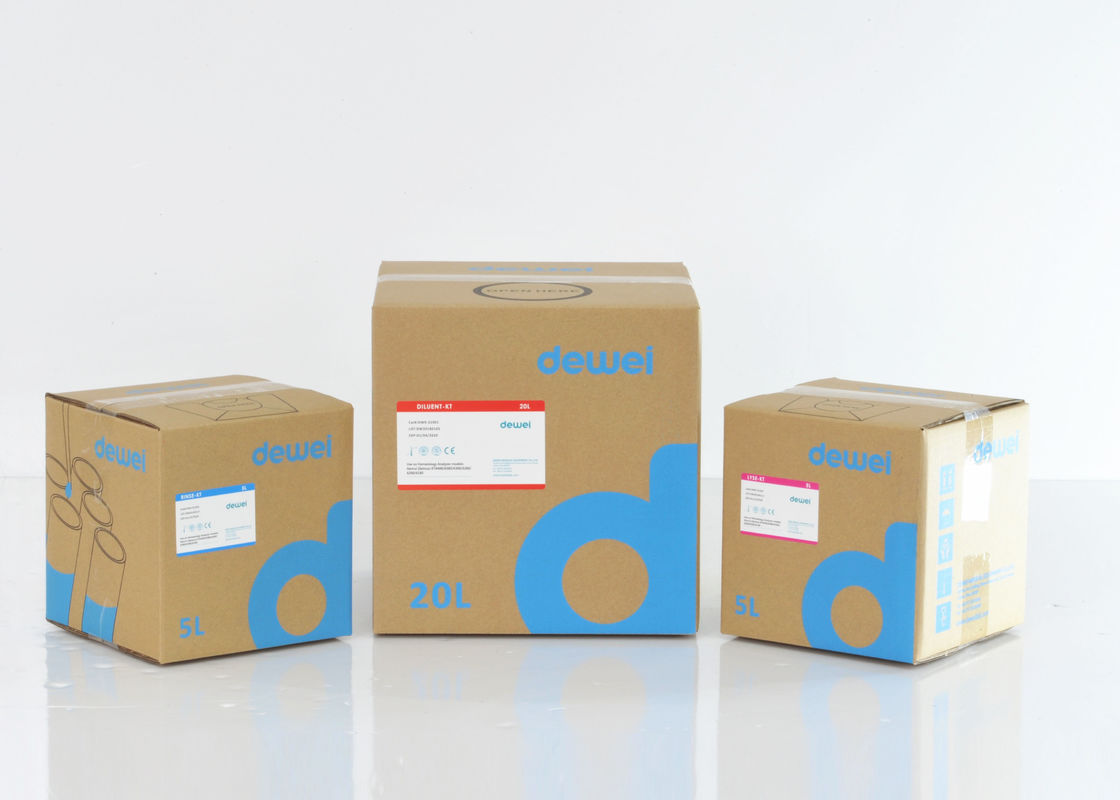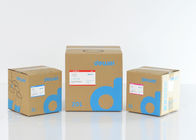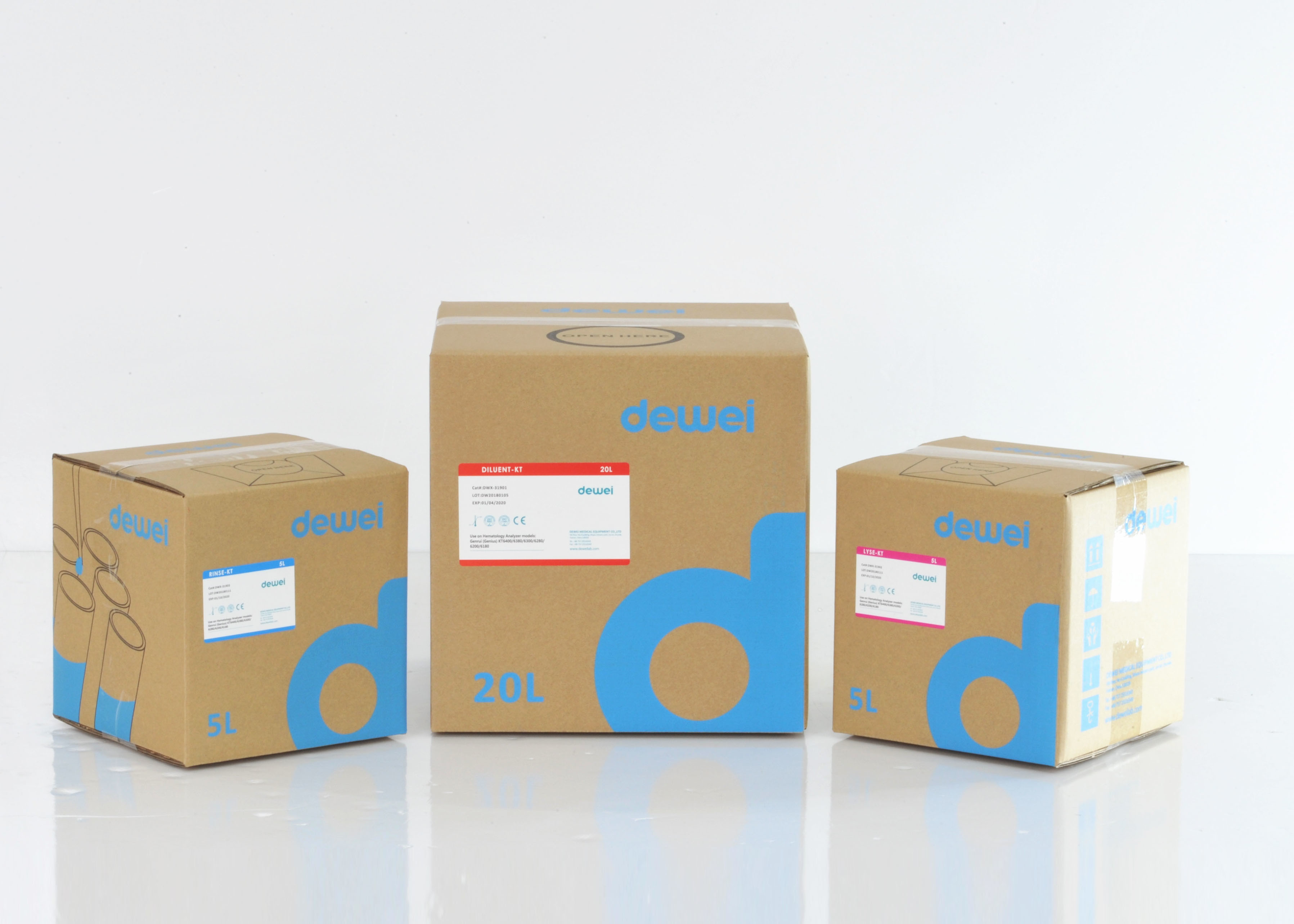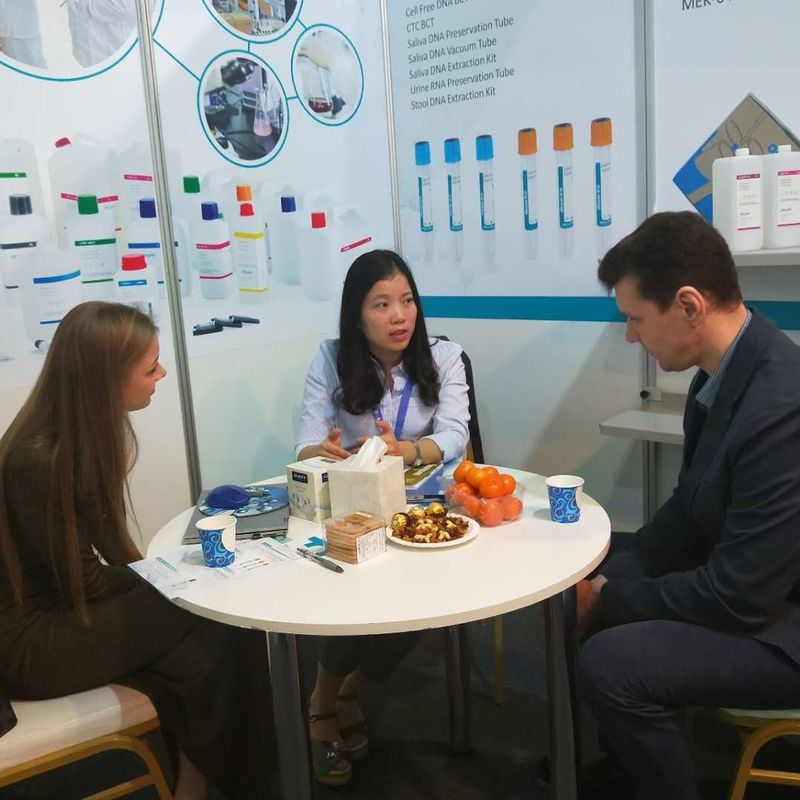Laboratory Cell Counter Reagents for GENRUI KT6400 KT6380 KT6300 3 Part Analyzer
Intended Use of Genrui Cell Counter Reagents
To be used for blood cell counting, sizing, and WBC differentiation, hemoglobin determination on GENRUI GENIUS KT6400 KT6380 KT6300 Hematology Analyzers.
Specification of Genrui Cell Counter Reagents
| Reagents on Genrui KT6400 KT6380 KT6300 KT6280 KT6200 KT6180 |
| Cat. No |
Description |
Pack Size |
| DWX-31901 |
DILUENT-KT |
20L |
| DWX-31902 |
LYSE-KT |
5L |
| DWX-31903 |
RINSE-KT |
5L |
What are the differences of cleaners?
The cleaners can be classified to two kinds. One is to clean the pipeline after a single test to revent cross-contamination, and to use after each test; Another is generally alkaline (such as the Mindray Probe Cleanser), which is used to shut down (for example, Mindray's e-z Cleanser) and regular maintenance.
Limitations of Detection Method
If the temperature of the reagent is out of the specified range, the specimen's measurement parameters may appear abnormal. If in this condition, please confirm the measurement parameters with the microscopy method. Please refer to the instrument operation manual for details.
Storage
The product should be stored in 2℃-35℃ and the storage period is 2 years. After opening the bottle, it is used in 15℃-30℃, and the validity period is 60 days.
Attention
1. This product is an in vitro diagnostic reagent;
2. Pay attention to seal and prevent pollution;
3. Read the instructions carefully before use, and should stop using them when they exceed the period of validity;
4. If the product freezes, it should be completely defrosted at room temperature and used after mixing.
5. Waste liquid, waste, residual products and treatment of contaminated packaging materials, please comply with local regulations;
6. It is strictly forbidden to eat and avoid contact with eyes and skin. Once Contact your eyes and skin,please clean immediately with plenty of water and seek medical advice.
Some product questions you may want to ask:
1) What are the reagents of hematology Analyser?
At present, hematology analyzers on the market can be divided into 3 part hematology analyzers and 5 part hematology analyzers. Hematology reagents are also indispensable in the use of hematology analyzer. Hematology reagents include hemolytic agents, diluents, cleaning solutions and concentrated cleaning solutions.
2) What is the diluent in the hematology analyzer?
The diluent for the hematology analyzer comprises sodium chloride, sodium sulfate, a phosphate buffer agent, ethylene diamine tetraacetic acid, 1-pyridone-2-sulphur and formaldehyde, and the pH value of the solution is 6.5-7.4, and preferably is 7.2; the content of each component is preferably as follows: 5g/L of ...
3) Which diluent is good for RBC and platelet counting?
For this, the blood specimen is diluted (usually in 1:200 ratio) with the help of RBC diluting fluid (commonly the Hayem's Fluid) which preserve and fix the Red blood cells. The Hayem's fluid is isotonic to the Red blood cells and does not cause any damage to it.
4) What is the use of Lyse in hematology analyzer?
It is used to lyse (destroy) red blood celis for hemogiobin determinations or aid in the counting of white blood cells. Applicable to the hematology analyzers.
5) What is the composition of Lyse for hematology analyzer?
The lytic reagent composition comprises a short chain alkyl oxyethanol selected from the group consisting of 2-methoxyethanol, 2-ethoxyethanol, 2-propoxyethanol, and 2-isopropoxyethanol in a sufficient amount to preserve leukocytes; a non-lysing nonionic surfactant as a debris solublizer; and an inorganic buffer to ...
6) Which of the following combination of reagents is used to measure hemoglobin?
This is done by adding both potassium cyanide and ferricyanide whose absorbance is then measured at 540 nm using a photoelectric colorimeter against a standard quality control solution. The Hb concentration is then determined by the result produced by the photoelectric colorimeter.
7) What is the principle of 3 part hematology analyzer?
In a 3-part analyzer the cell counting is based on the Coulter Principle. All hematology analyzers utilise Coulter's Principle. 3-part differential cell counter employs Coulter's Principle to determine the size as well as volume of the cells. Coulter's principle is applied employing two electrodes.
8) What is a particle cell counterand analyzer reagent?
A variety of reagents that are designed for some cell counters and analyzer that optimize instrument setup, sample preparation and quality control.



 Your message must be between 20-3,000 characters!
Your message must be between 20-3,000 characters! Please check your E-mail!
Please check your E-mail!  Your message must be between 20-3,000 characters!
Your message must be between 20-3,000 characters! Please check your E-mail!
Please check your E-mail! 







